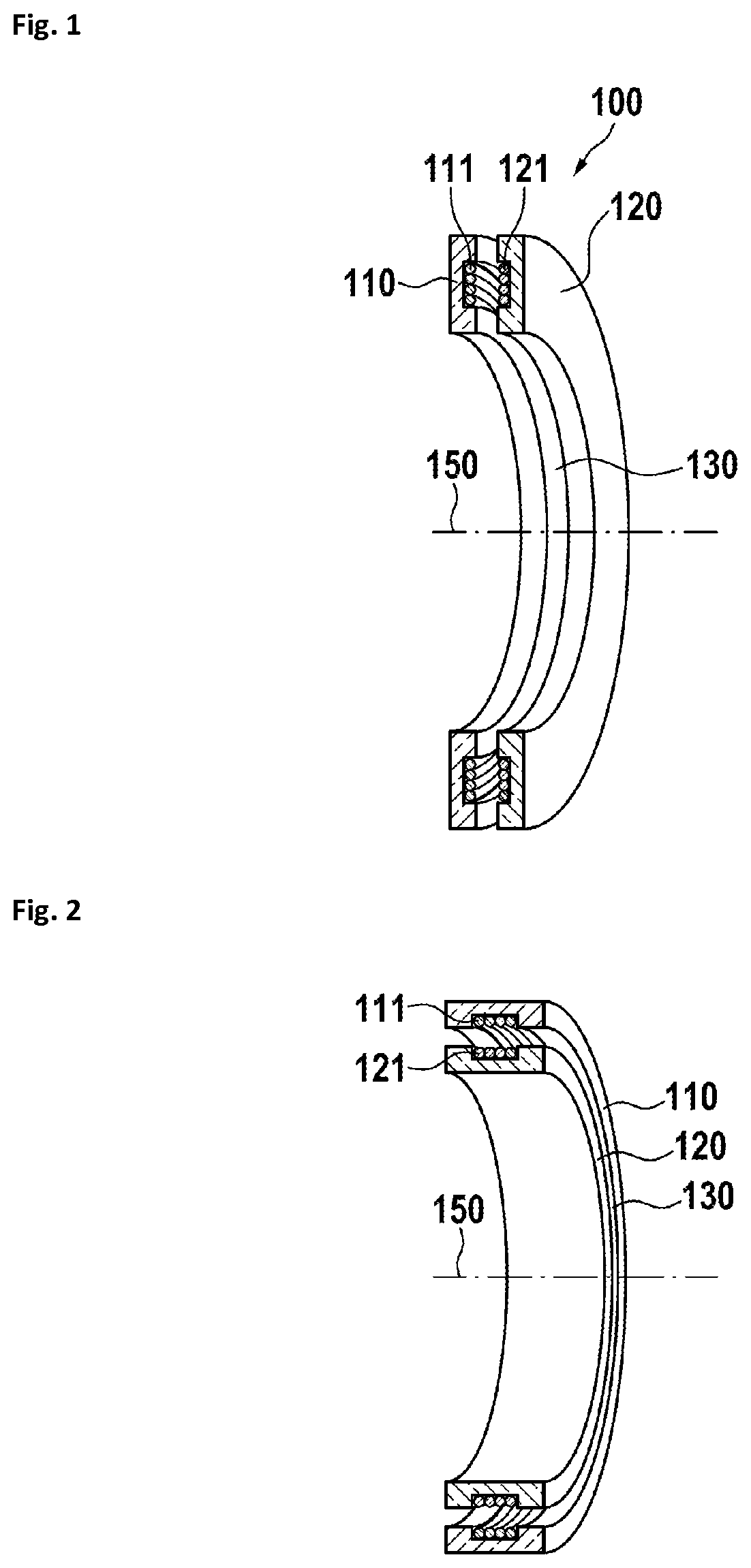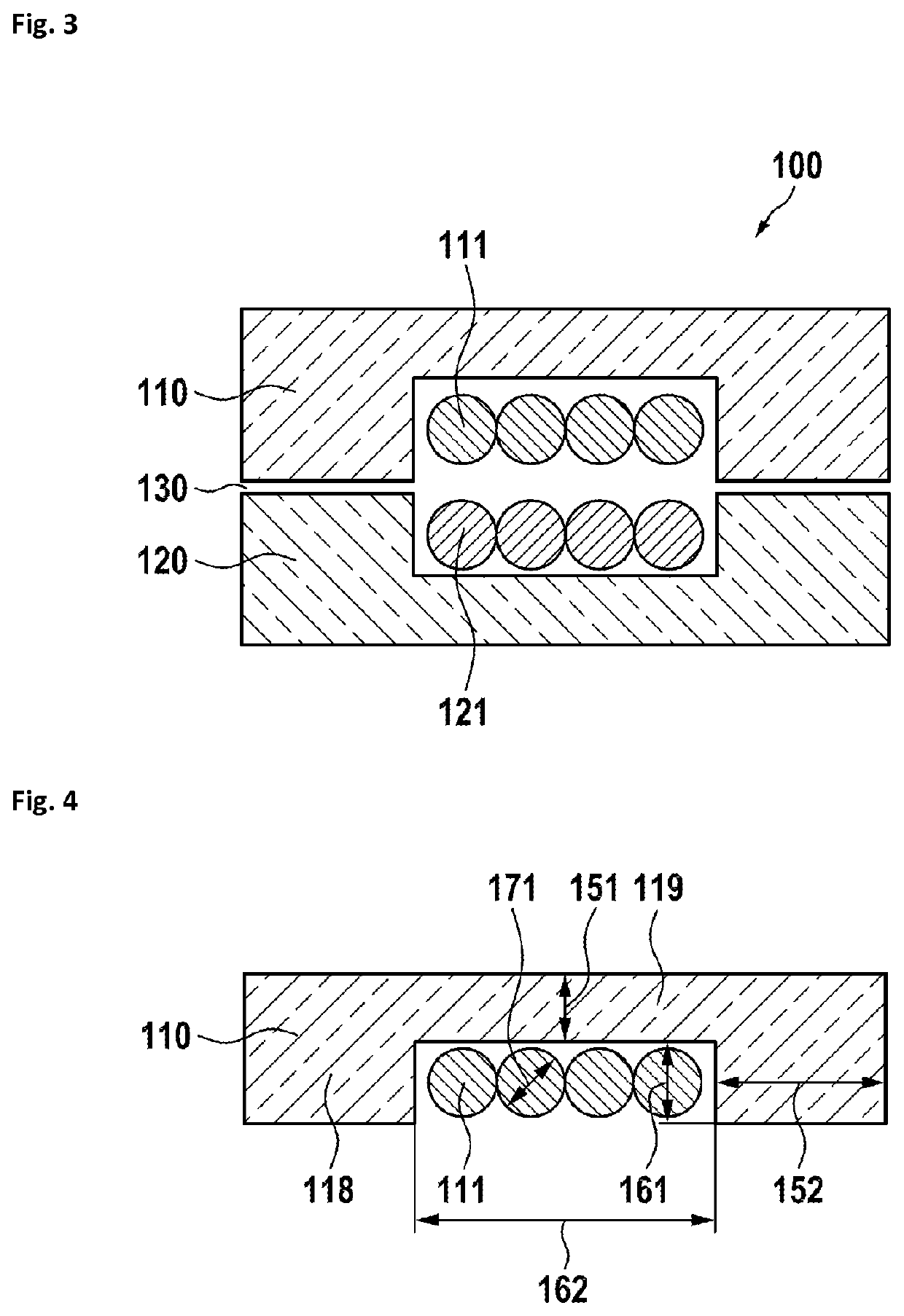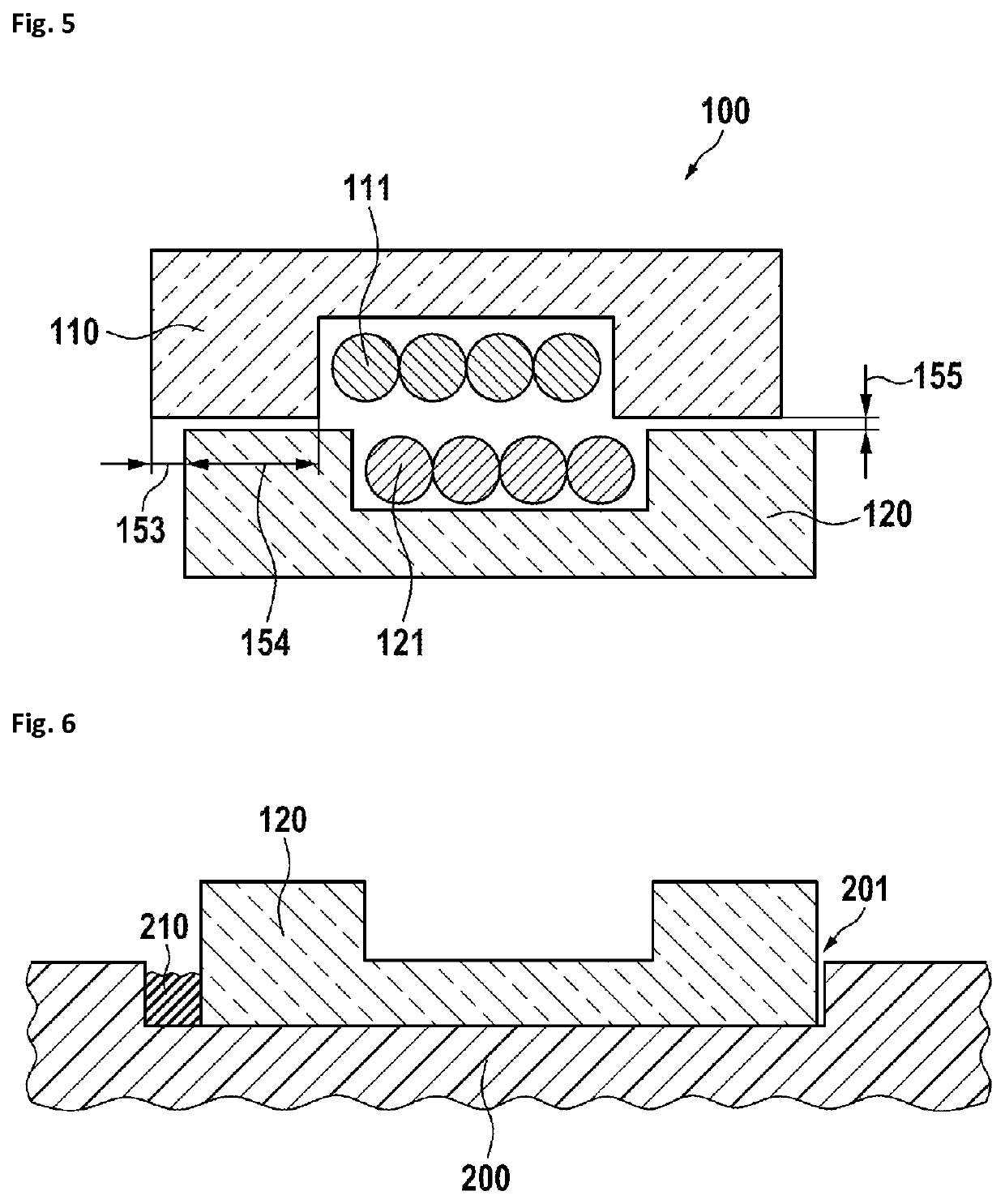Inductive rotary joint with U-shaped ferrite cores
a rotary joint and ferrite core technology, applied in the field of contactless rotary joints, can solve the problems of further changing the geometry of the air gap, and reducing the inductance and heat dissipation of the magnetic core, so as to improve the robustness and the ability to withstand, and simplify the mechanical design.
- Summary
- Abstract
- Description
- Claims
- Application Information
AI Technical Summary
Benefits of technology
Problems solved by technology
Method used
Image
Examples
first embodiment
[0030]In FIG. 1, a disk-shaped rotating power transformer 100 is shown. A primary magnetic core 110 having a primary winding 111 is rotatable against a secondary magnetic core 120 having a secondary magnetic winding 121. Between the primary magnetic core 110 and the secondary magnetic core 120 is an air gap 130 in a plane orthogonal to the rotation axis 150.
second embodiment
[0031]In FIG. 2, a drum-shaped rotating power transformer is shown. A primary magnetic core 110 having a primary winding 111 is rotatable against a secondary magnetic core 120 having a secondary magnetic winding 121. Between the primary magnetic core 110 and the secondary magnetic core 120 is an air gap 130 on a cylinder surface coaxial with the rotation axis 150.
[0032]In FIG. 3, a sectional view of a rotating power transformer is shown.
[0033]A primary magnetic core 110 having a primary winding 111 is rotatable against a secondary magnetic core 120 having a secondary magnetic winding 121. Between the primary magnetic core 110 and the secondary magnetic core 120 is an air gap 130.
[0034]In FIG. 4, dimensions of a magnetic core are shown. The primary magnetic core 110 has essentially the same dimensions as the secondary magnetic core 120. Therefore, reference is only made to the primary magnetic core 110. It has two legs 118 and a base 119 connecting both legs. The legs 118 have a leg ...
PUM
| Property | Measurement | Unit |
|---|---|---|
| power | aaaaa | aaaaa |
| bore diameter | aaaaa | aaaaa |
| inner diameter | aaaaa | aaaaa |
Abstract
Description
Claims
Application Information
 Login to View More
Login to View More - R&D
- Intellectual Property
- Life Sciences
- Materials
- Tech Scout
- Unparalleled Data Quality
- Higher Quality Content
- 60% Fewer Hallucinations
Browse by: Latest US Patents, China's latest patents, Technical Efficacy Thesaurus, Application Domain, Technology Topic, Popular Technical Reports.
© 2025 PatSnap. All rights reserved.Legal|Privacy policy|Modern Slavery Act Transparency Statement|Sitemap|About US| Contact US: help@patsnap.com



